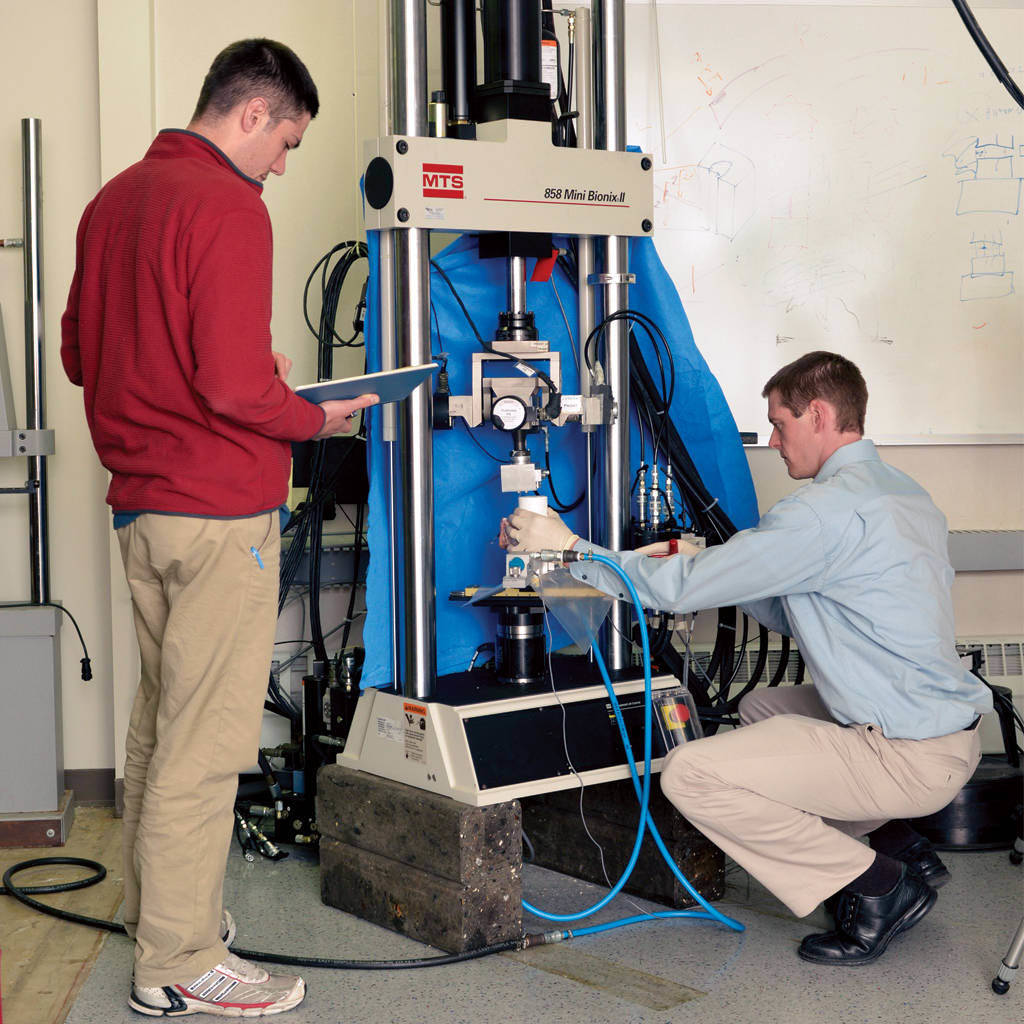
CUSTOMER CHALLENGE
Founded in the late 1970s in Minneapolis, Minnesota, the Excelen Center for Bone & Joint Research examines and tests orthopaedic implants, instruments and surgical procedures. The nonprofit organization serves the medical, academic and business communities through a steadfast commitment to translational research: the practice of ensuring a tight connection between an existing need and anticipated results.
Translational research is in high demand. Osteoporosis, osteoarthritis and chronic back pain are all on the rise and compounded by a rapidly aging U.S. population, increasing the need to develop more effective orthopaedic innovations as quickly as possible.
“We don’t want to do research that is going to take 30 years to deliver results,” said Andy Freeman, Senior Scientist and Lead Engineer at Excelen. “We look at different technologies and ask ourselves how we can use them to meet immediate patient needs.”
Excelen faces the ongoing challenge of accommodating the increased demand while maintaining highly accurate testing and test results. Maintaining such accuracy is especially challenging with spine-related testing, which represents 60 to 70 percent of the lab’s work. These tests must be designed for many kinds of devices, and spinal motions have been historically difficult to replicate in the test lab.
“There are a lot of techniques for spine kinematics testing, each with unique challenges,” Freeman said. “You can push on the spine with a lever-type setup, but that can cause unintentional bending. Cable/pulley tests are the most common but are time-consuming and sometimes require manual load application, and you can only test in one direction. Cadaveric spine specimens rapidly degrade, so you only get so much time.”
MTS SOLUTION
Excelen employs three MTS test systems for the majority of its testing, including spine studies: an MTS Bionix® multiaxial system, an MTS Bionix uniaxial system and a legacy MTS Model 810 load frame, which is still used daily despite being more than 30 years old. These systems run through a combination of MTS FlexTest® digital controls and MTS MultiPurpose TestWare® Software.
“We find the multiaxial system especially useful for spine kinematics studies, because we can test in multiple directions simultaneously,” Freeman said. “Combining flexion, extension, bending and torsion at the same time allows us to simulate the full range of motion in a highly realistic manner, without spending time on stopping and readjusting.”
The Excelen test setup also features flexibility to perform a variety of techniques on a wide range of test specimen types and sizes, including spine kinematics tests for new devices enabling motion preservation and spinal fusion, as well as more innovative work. For example, Freeman’s team incorporates a C-arm device and fluoroscopy to “see” how implantable devices operate in real-time. The team also tracks the motion of test specimens with multiple cameras simultaneously, providing detailed characterizations on the effect of the device. All data acquisition is orchestrated from within the MTS MultiPurpose TestWare interface.
“Another complex kinematics process we examine is how well a fixation device at a fracture site holds up when you apply torsion or bending,” said Joanie Bechtold, PhD, Director of Research at Excelen. “Recently, we did a torsion test with seven different combinations of locking and non-locking screws. Surgeons used our results to minimize the number of locking screws required, which are more expensive and difficult to remove. The results also helped identify which screw patterns are most effective.”
CUSTOMER BENEFITS
According to Freeman, MTS hardware and software not only help Excelen complete spine kinematics characterizations faster, they improve the overall realism of the testing.
“The forces and moments we create are nearly identical to those of a real person’s everyday motions,” Freeman said. “Signals can remain out of phase with each other, which allows us to replicate a walking motion or execute aggressive cyclic loading for fatigue testing, for example. The camera, strain gages and all other sensors can also be simultaneously triggered and coordinated. All of this gives us complete confidence in our test results.”
The Excelen team recently took a more scientific approach to validating its test setup, through a series of round-robin tests conducted at test labs across the country.
“We tested intact spine motion segments in our lab, then tested the same specimens at the University of Minnesota, then in California with a cable/pulley setup, and finally in Arizona with yet another spine setup, then back to our lab for a repeat test,” Freeman said. “This allowed us to see how other labs perform these tests, and compare the results of various test protocols using the exact same specimen. After analyzing the results, I am more satisfied than ever that our setup is ideally suited for our needs.”
Freeman cites ongoing collaboration between biomechanical engineers, surgeons and MTS technical staff as essential to the successful validation of devices and surgical techniques at Excelen.
“Trauma surgeons bring in their unique expertise regarding patient needs. We apply our translational research knowledge. And MTS supports us with its significant mechanical testing experience,” Freeman said. “This teamwork continues to allow better implants, instruments and surgical procedures to enter the marketplace sooner. When you’re talking about enhancing the real lives of real people, this time savings means everything.”

